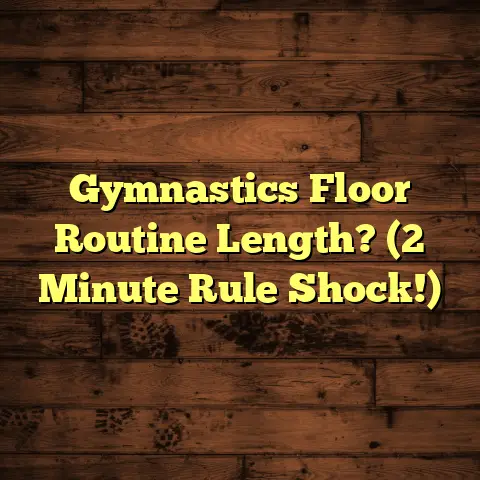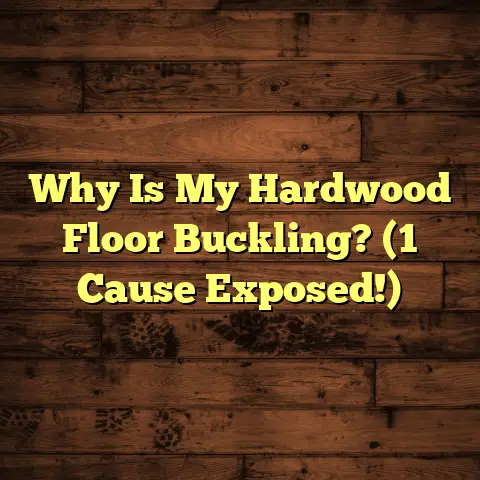1200 Sq Ft Wood Flooring Cost (Explained)
1200 Sq Ft Wood Flooring Cost (Explained)
When considering installing hardwood flooring in your home or commercial space, understanding the costs involved is essential for budgeting and planning. In this article, we will break down the various factors that influence the overall cost of installing hardwood flooring in a 1200 square foot area. We will also compare hardwood with alternative flooring options, discuss the signs that indicate whether to replace or refinish your floors, and provide insightful tips on maintenance, installation, and working with contractors.
1. Major Cost Factors in Hardwood Flooring Installation
1.1 Area Size
The total area to be covered is a primary factor in determining the overall cost of flooring. For a space measuring 1200 sq ft, you can expect costs to scale based on the wood type and installation method chosen.
1.2 Hardwood Type
Different hardwood species come with varying price tags. Some popular options include:
- Oak: A common choice due to its durability and aesthetic appeal, typically priced between $3 to $8 per sq ft.
- Maple: Known for its hardness and fine grain, generally costing around $5 to $10 per sq ft.
- Cherry: Offers a rich color and warmth, usually priced from $6 to $12 per sq ft.
- Walnut: A premium option with a striking appearance, costing approximately $8 to $15 per sq ft.
1.3 Labor Costs
Labor can account for 30% to 50% of the total project cost. Professional installation typically ranges from $2 to $7 per sq ft, depending on the complexity of the job and local market rates.
1.4 Additional Considerations
Several additional factors can influence the overall cost:
- Floor Removal: If there is an existing floor that needs removing, expect to pay between $1 to $3 per sq ft.
- Subfloor Replacement: Repairs or replacement of the subfloor may add an additional $1 to $5 per sq ft.
- Material Grade: Higher-grade wood (clear or select) will be more expensive than lower grades (common).
- Room Size/Layout: Irregular room layouts may increase labor costs due to the complexity of installation.
- Installation Type: Different methods (nail-down, glue-down, floating) can vary in cost.
2. Cost Breakdown for a 1200 Sq Ft Project
2.1 Estimated Total Costs
Here’s an estimated cost breakdown for installing hardwood flooring across various wood types for a 1200 sq ft area:
| Wood Type | Material Cost (sq ft) | Labor Cost (sq ft) | Total Cost (Material + Labor) |
|---|---|---|---|
| Oak | $3 – $8 | $2 – $7 | $5 – $15 |
| Maple | $5 – $10 | $2 – $7 | $7 – $17 |
| Cherry | $6 – $12 | $2 – $7 | $8 – $19 |
| Walnut | $8 – $15 | $2 – $7 | $10 – $22 |
For a 1200 sq ft area, total costs could range from approximately:
- Oak: $6,000 to $18,000
- Maple: $8,400 to $20,400
- Cherry: $9,600 to $22,800
- Walnut: $12,000 to $26,400
2.2 Comparing Hardwood with Alternative Flooring Options
When evaluating flooring choices, consider the following comparisons:
| Flooring Type | Cost Range per sq ft | Durability | Aesthetic Appeal |
|---|---|---|---|
| Hardwood | $5 – $22 | High | High |
| Laminate | $1 – $5 | Moderate | Moderate |
| Vinyl | $2 – $7 | High | Moderate |
| Carpet | $1 – $10 | Low | Variable |
While hardwood is typically more expensive than alternatives like laminate and vinyl, its durability and timeless aesthetic make it a worthwhile investment.
3. Signs that Hardwood Floors Need Replacement
Before deciding on refinishing or replacing your hardwood floors, look for the following signs:
- Deep Scratches or Gouges: If the damage is extensive and beyond refinishing capabilities.
- Water Damage: Warping or buckling caused by moisture exposure can compromise structural integrity.
- Severe Discoloration: Stains that cannot be removed may indicate the need for replacement.
- Squeaky or Unstable Boards: These issues may signal deeper structural problems.
4. Refinishing vs. Replacement
Deciding whether to refinish or replace your hardwood flooring depends on several factors:
- Condition of Existing Floors: If they are structurally sound but show wear and tear, refinishing may suffice.
- Cost Considerations: Refinishing is generally less expensive than replacement.
- Desired Look: If you want a different wood species or finish entirely, replacement may be necessary.
5. Pros and Cons of Hardwood Flooring
5.1 Pros
- Timeless beauty and elegance
- Increases property value
- Long-lasting durability
- Easy maintenance with proper care
5.2 Cons
- Higher initial cost compared to alternatives
- Susceptible to scratches and dents
- Requires maintenance (refinishing every few years)
- Vulnerability to moisture damage
6. Professional Installation vs. DIY
6.1 Cost Differences
While DIY installation may save on labor costs (ranging from $2-$7 per sq ft), it requires a significant investment in tools and materials. Professional installation ensures proper techniques are followed, reducing issues in the long run.
6.2 Tools and Skills Required for DIY
If you choose DIY, you will need:
- Measuring tape
- Saw (circular or miter)
- Hammer or nail gun
- Leveling compound
- Safety gear (gloves, goggles)
Ensure you have the necessary skills for measuring, cutting, and fitting the flooring properly.
7. Questions to Ask Hardwood Flooring Contractors
When interviewing contractors, ask these key questions:
- What is your experience with the specific type of hardwood I am considering?
- Can you provide references from previous clients?
- What is included in your estimate? Are there additional fees?
- How do you handle unexpected issues during installation?
- What warranties do you offer on both materials and workmanship?
8. Hardwood Floor Care and Maintenance Tips
To maximize the longevity of your hardwood floors, follow these maintenance tips:
- Regular Cleaning: Sweep or vacuum frequently to remove dirt and debris.
- Moisture Control: Use mats at entryways to prevent moisture damage.
- Avoid Excessive Water: Never wet mop; use a damp cloth instead.
- Refinishing: Schedule refinishing every 5 to 10 years as needed.
Conclusion
Investing in hardwood flooring can significantly enhance your space’s aesthetic appeal and value. By understanding and evaluating all cost factors associated with a 1200 sq ft installation—alongside making informed choices about wood types, installation methods, and maintenance—you can ensure that your flooring project is successful and meets your long-term needs. Whether you opt for professional installation or decide to tackle it as a DIY project, knowing what to expect will help you navigate this important home improvement decision effectively.





